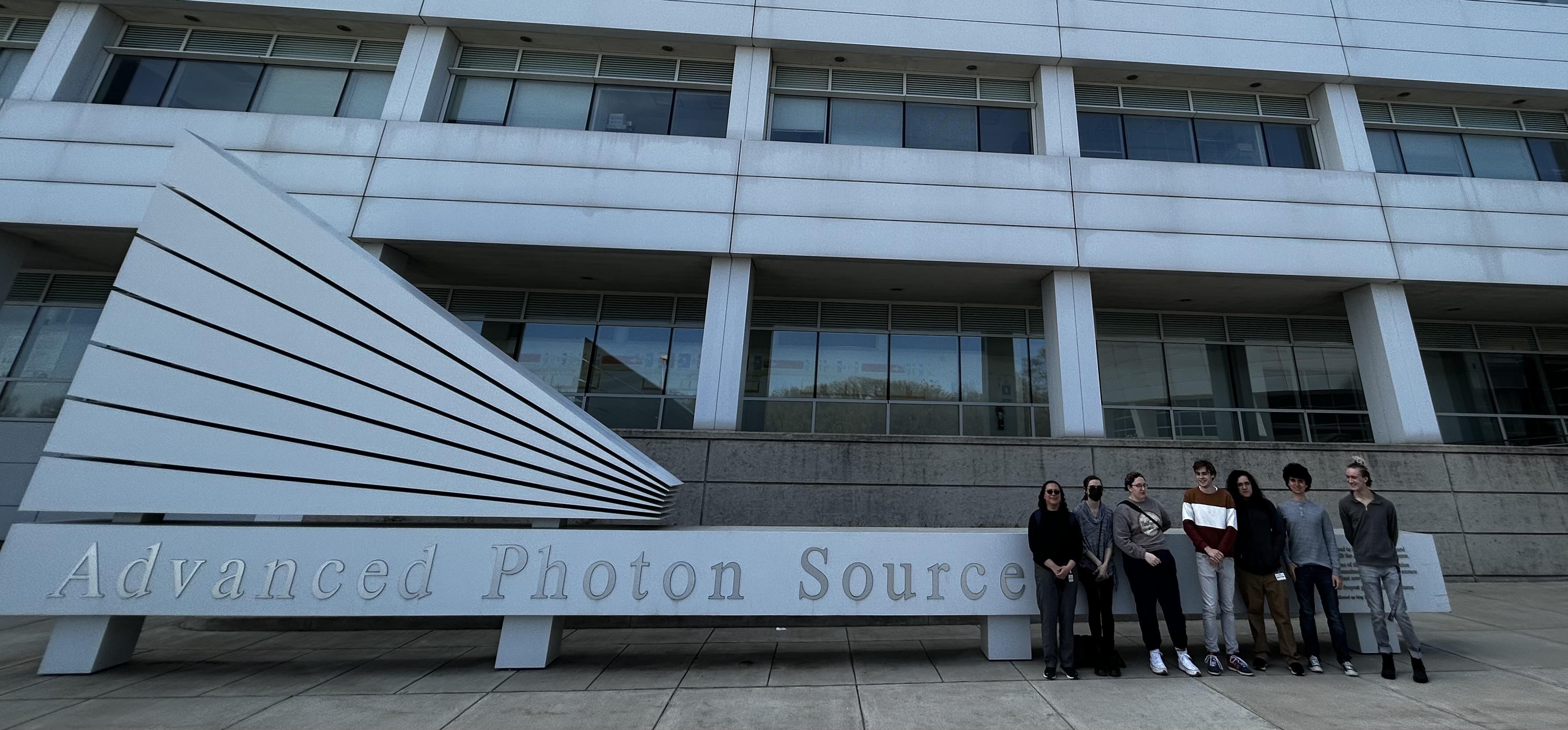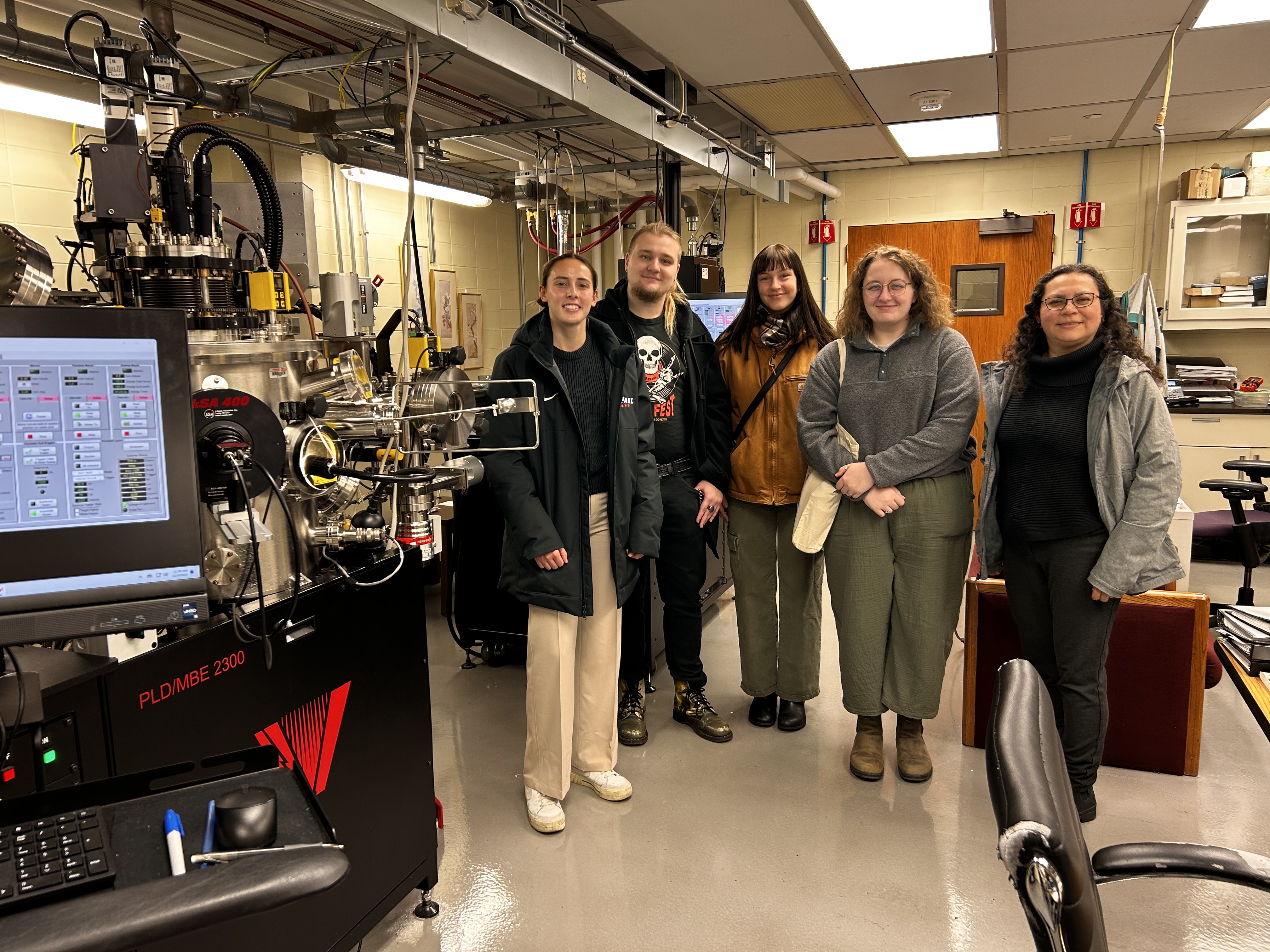 Left to right: Gabriela Gonzalez Aviles, Claire Riegger, Kathryn Griggs, Simon Lynn-Klimenko, Jacobo Serrano Mora, Gabriel Cardenas, and Lucien Kaczmarczyk.
Left to right: Gabriela Gonzalez Aviles, Claire Riegger, Kathryn Griggs, Simon Lynn-Klimenko, Jacobo Serrano Mora, Gabriel Cardenas, and Lucien Kaczmarczyk.D
ePaul associate professor Gabriela Gonzalez Aviles, former graduate student Thomas Bsaibes, and 8 undergraduate students from the department of physics and astrophysics have published a study on the atomic composition of a compound that could have significant implications for consumer electronics.Zinc-indium-tin oxide, or ZITO, is a version of an electronic material already found in everyday products like smartphones, tablets, and flat-panel displays. Due to their transparency and electrical conductivity, such compounds are widely incorporated in the touchscreen-heavy consumer electronics market. ZITO can have better properties than its more commercially used counterpart, indium-tin oxide, potentially improving the performance of electronic devices. And until now, few studies have been conducted on its atomic properties.
“Most commercial applications use crystalline indium-tin oxide, or ITO, films. Amorphous samples have better mechanical properties, require lower preparation temperatures, and some can have better electrical properties compared to the crystalline films. Unlike ITO, ZITO is amorphous at room temperature, enabling lower temperature depositions and the use of plastic substrates that can bend without breaking, opening a wider range of applications including flexible electronic displays," Gonzalez Aviles explains.
The purpose of the study was to compare the atomic structure and electron mobility in both amorphous and crystalline ZITO samples, as well as investigate correlations between the compound's structural and electrical properties. The researchers used x-ray scattering to analyze these features - a technique where an x-ray beam interacts with the electrons within a sample to 'scatter' or change the direction of the rays. The angle and intensity of the scattered rays provide crucial insight into a compound's composition. The data was collected at the Advanced Photon Source at Argonne National Laboratory, where the team gathered hundreds of x-ray scattering images.
The project was part of former student Thomas Bsaibes' Physics M.S. thesis, while undergraduate students Miko Stulajter, Manuel Osorio, and Timothy Holmes worked together to perform an initial analysis of the data. Other undergraduate co-authors Samantha Cone, Kurt Edland, Gabriel Cardenas, Claire Riegger, and Olivia Medina extended work on the project, focusing on different phases of the analysis. The students worked collaboratively to establish a methodology for the research, while Stulajter and Riegger developed much of the code necessary to process the data sets.
“Working on this research project and developing the MATLAB code to analyze data was a formative experience. It sparked my interest in scientific research and directly influenced my decision to pursue a Ph.D. in computational science," Stulajter shares.
 Gabriela Gonzalez Aviles with students from her lab (left to right: Olivia Medina, Xavier Dabrowiecki, Ruby Schwieger, and Kathryn Griggs) standing next to a Pulsed Laser Deposition chamber at Northwestern University similar to the one used to make the ZITO film samples for the project.
Gabriela Gonzalez Aviles with students from her lab (left to right: Olivia Medina, Xavier Dabrowiecki, Ruby Schwieger, and Kathryn Griggs) standing next to a Pulsed Laser Deposition chamber at Northwestern University similar to the one used to make the ZITO film samples for the project.The research was primarily funded by National Science Foundation grants from the Materials Research Center at Northwestern University and was a collaborative effort with scientists from Northwestern, Argonne National Laboratory, and the Missouri University of Science and Technology. Many of the students also received College of Science and Health funding through the Undergraduate Research Assistantship Program and Undergraduate Summer Research Program to complete the work.
Current and future extensions of the research include testing thinner versions of the ZITO film for more dramatic structural changes, as well as investigating other amorphous and crystalline transparent conductive materials and their potential usability for practical applications.
You can read the full study in the Journal of Applied Physics.